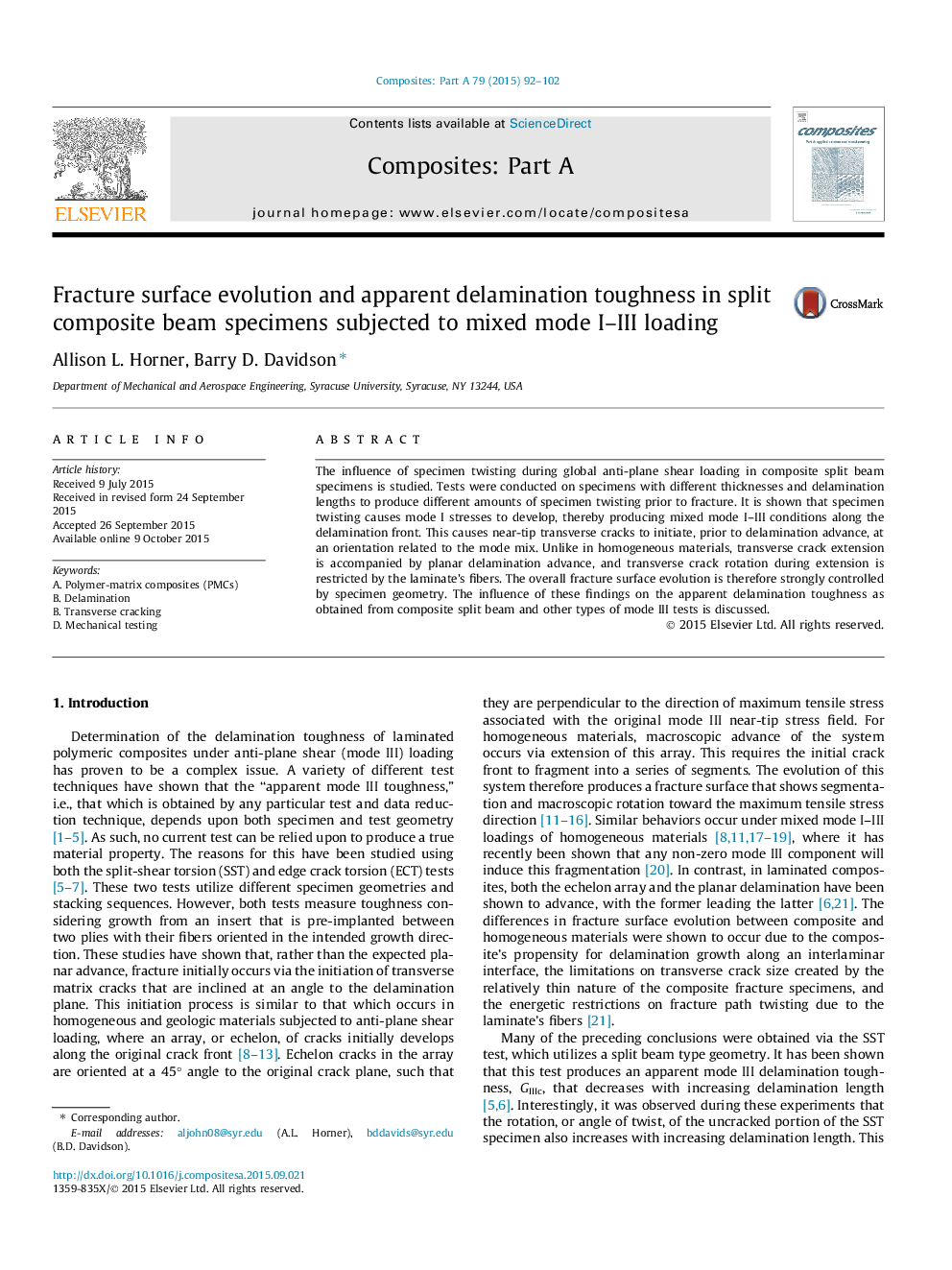| Article ID | Journal | Published Year | Pages | File Type |
|---|---|---|---|---|
| 1465842 | Composites Part A: Applied Science and Manufacturing | 2015 | 11 Pages |
The influence of specimen twisting during global anti-plane shear loading in composite split beam specimens is studied. Tests were conducted on specimens with different thicknesses and delamination lengths to produce different amounts of specimen twisting prior to fracture. It is shown that specimen twisting causes mode I stresses to develop, thereby producing mixed mode I–III conditions along the delamination front. This causes near-tip transverse cracks to initiate, prior to delamination advance, at an orientation related to the mode mix. Unlike in homogeneous materials, transverse crack extension is accompanied by planar delamination advance, and transverse crack rotation during extension is restricted by the laminate’s fibers. The overall fracture surface evolution is therefore strongly controlled by specimen geometry. The influence of these findings on the apparent delamination toughness as obtained from composite split beam and other types of mode III tests is discussed.
